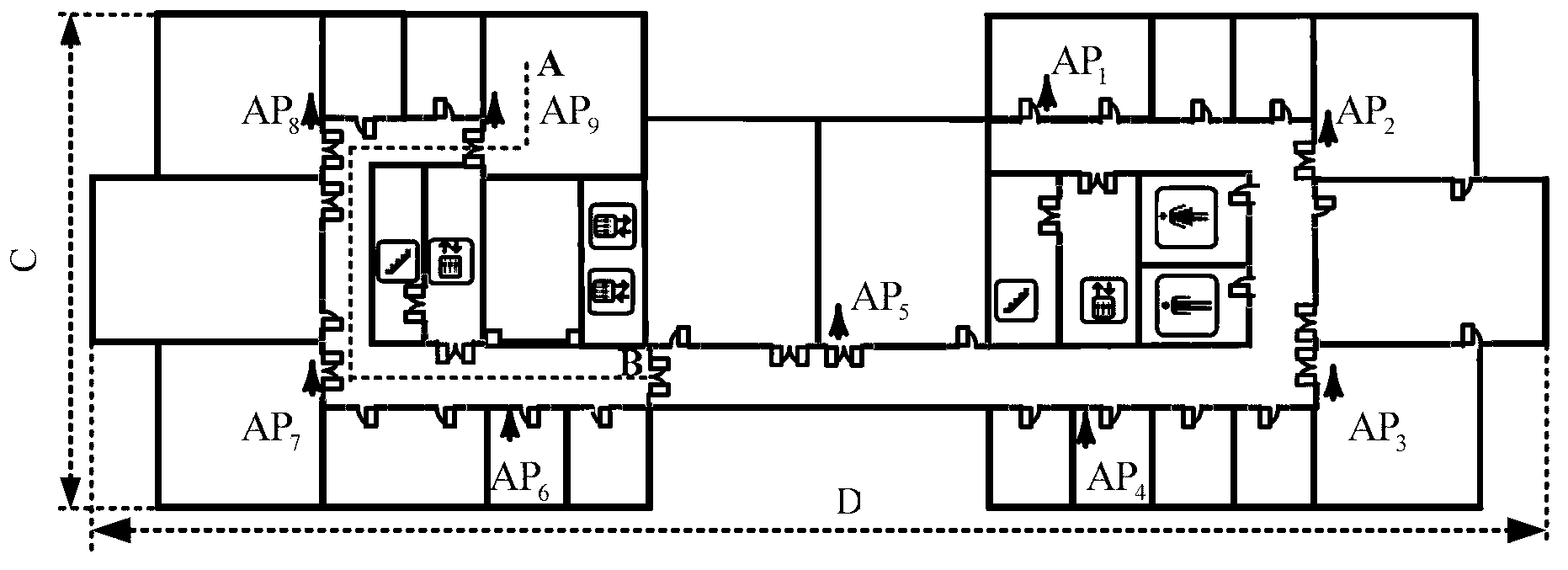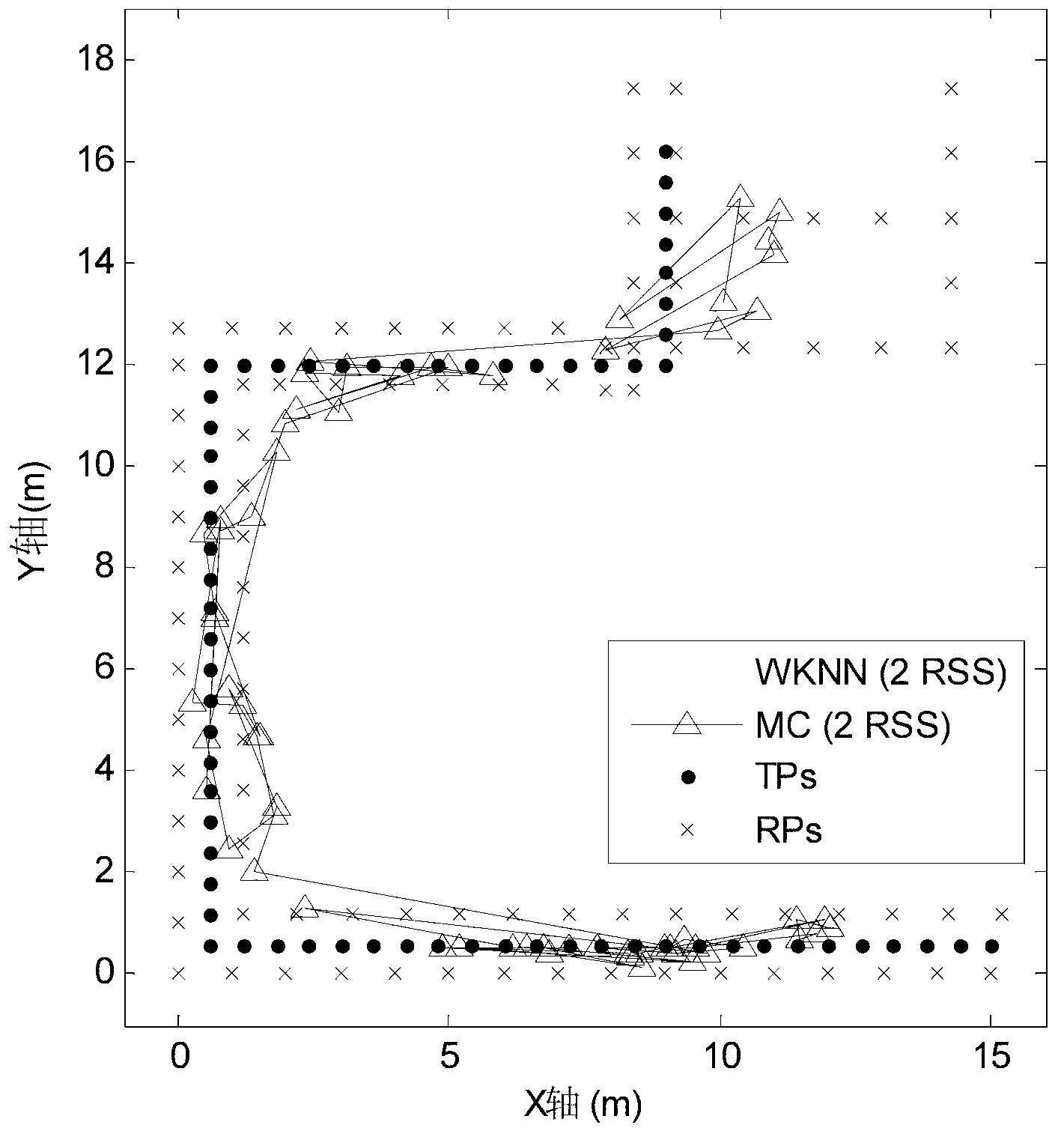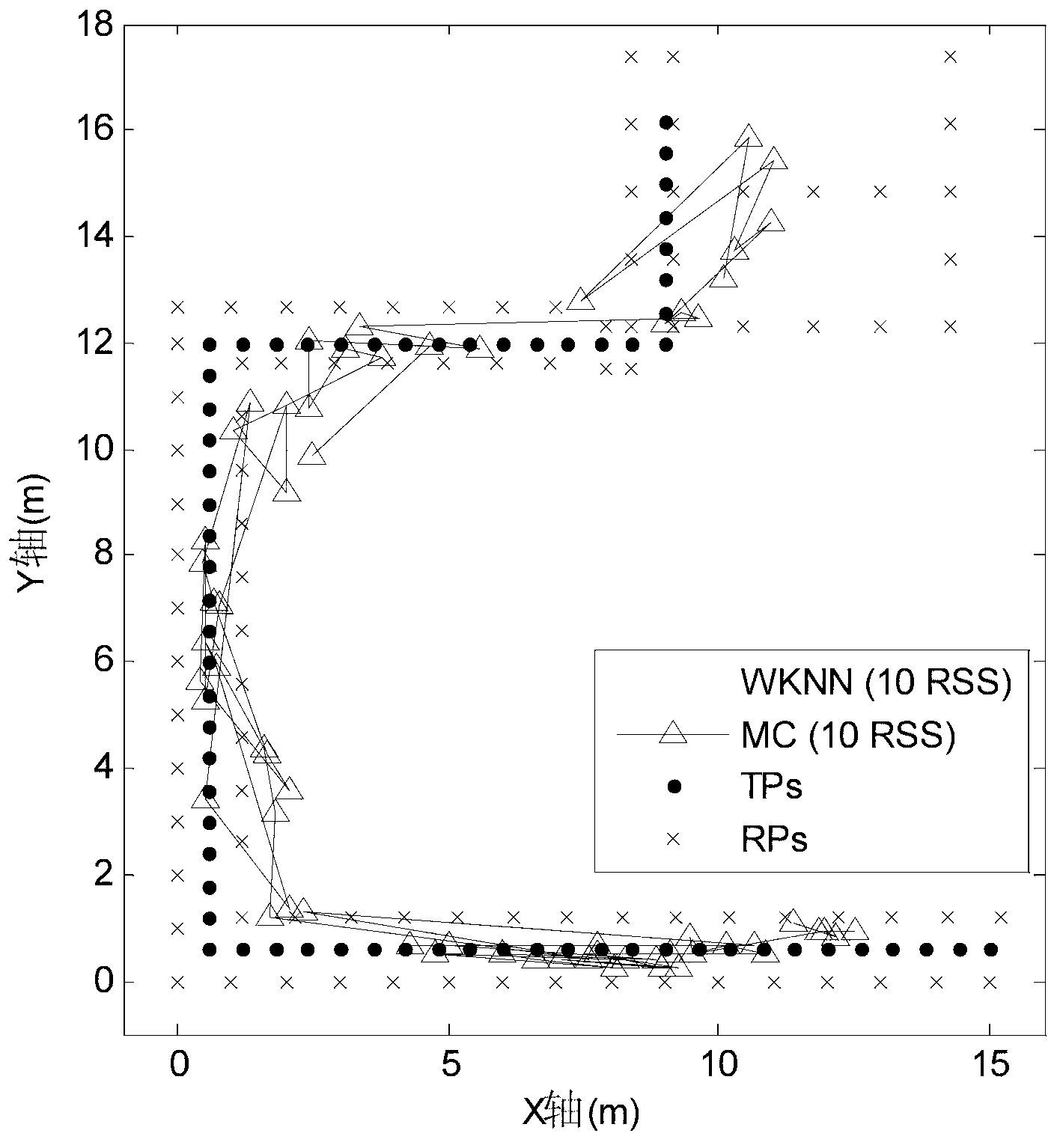WLAN indoor positioning method based on matrix correlation
An indoor positioning and matrix technology, applied in the field of pattern recognition, can solve problems such as missing RSS information, and achieve the effect of avoiding information loss and accurate positioning results
- Summary
- Abstract
- Description
- Claims
- Application Information
AI Technical Summary
Problems solved by technology
Method used
Image
Examples
specific Embodiment approach 1
[0021] Specific implementation mode one: the following combination Figure 4 Describe this embodiment, the WLAN indoor positioning method based on matrix correlation described in this embodiment, the method includes the following steps:
[0022] Step 1. In the offline stage, arrange M access points AP in the indoor target positioning environment i , i=1, 2,...M, create a two-dimensional Cartesian coordinate system in this positioning environment, and select L reference points RP j , j=1, 2,...L, record the coordinates of each reference point and W RSS samples collected at each reference point, and establish the position according to the coordinates of L reference points and the RSS samples of each reference point fingerprint database;
[0023] Step 2. In the online phase, the user receives RSS samples of M access points at each test point. When the user receives N RSS samples at a test point, the N samples are arranged into an M×N measurement matrix Each row represents N ...
specific Embodiment approach 2
[0030] Specific implementation mode 2: This implementation mode further explains the implementation mode 1. In step 3, the calculation matrix rss and the RSS matrix RSS of each reference point l The Pearson correlation coefficient r between l Obtain according to the following formula:
[0031] r l = Σ m = 1 M Σ n = 1 N ( rss ...
specific Embodiment approach 3
[0033] Specific implementation mode three: the following combination Figure 1 to Figure 3 Specific examples are given.
[0034] exist figure 1 The effectiveness of the method is tested in the experimental environment, in which 9 Linksys WAP54G APs are arranged in an indoor environment of 24.9m×66.4m. The experimental path is from point A in the room to point B in the corridor with a width of 3 meters. The experiment uses an ASUS laptop to collect data. It is equipped with Intel PRO / Wireless 3945ABG wireless network card and RSS sample collection software NetStumbler, and the sampling rate is 2 RSS samples per second. In the offline stage, 24 RPs are selected in the room and 67 RPs are selected in the 3-meter-wide corridor, and a total of 300 RSS samples are collected for 150 seconds on each RP. In the online stage, a total of 65 test points were selected along the experimental path with a spacing of 0.6m. Considering the number and arrangement of RP, when K=9 is selected...
PUM
 Login to View More
Login to View More Abstract
Description
Claims
Application Information
 Login to View More
Login to View More - R&D
- Intellectual Property
- Life Sciences
- Materials
- Tech Scout
- Unparalleled Data Quality
- Higher Quality Content
- 60% Fewer Hallucinations
Browse by: Latest US Patents, China's latest patents, Technical Efficacy Thesaurus, Application Domain, Technology Topic, Popular Technical Reports.
© 2025 PatSnap. All rights reserved.Legal|Privacy policy|Modern Slavery Act Transparency Statement|Sitemap|About US| Contact US: help@patsnap.com



